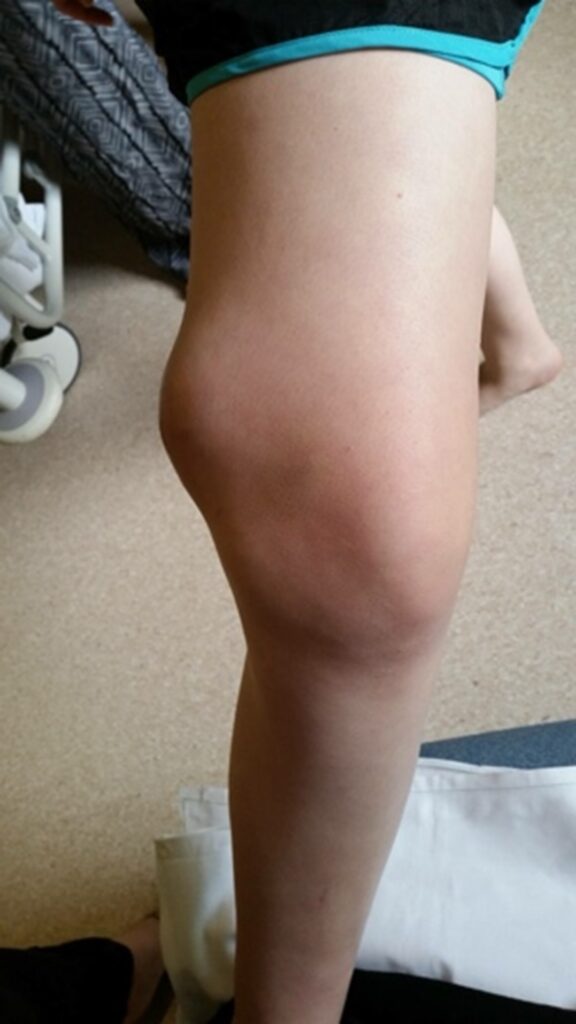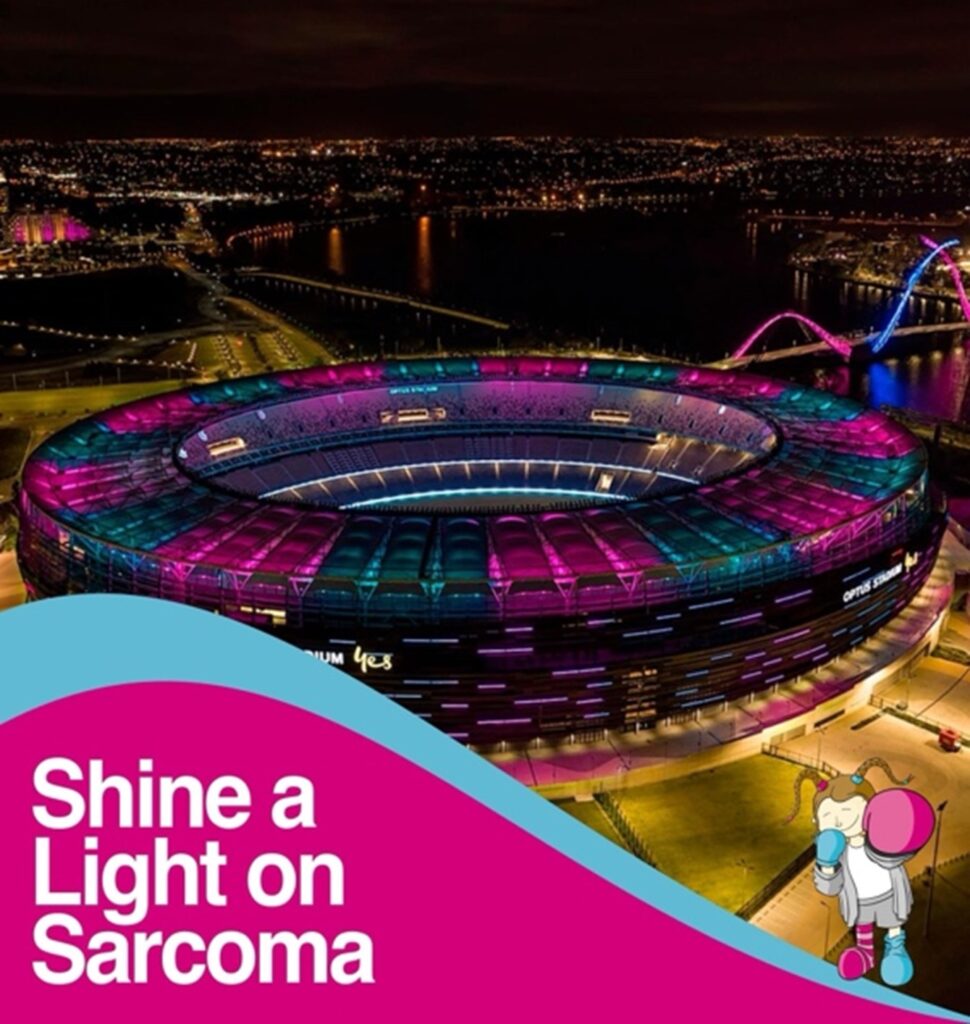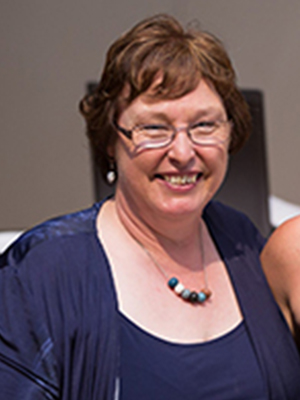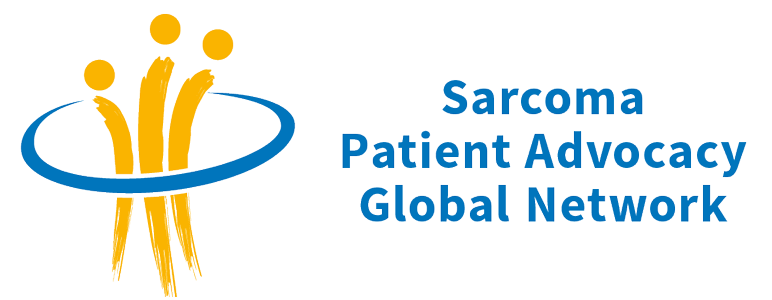Abbie’s Determination to Sock it to Sarcoma!

How one family's fight with Ewing's Sarcoma started a movement for speedy diagnosis in rural Western Australia
By Mandy Basson
Travel back in time to April 2009.
Life seemed settled as my younger daughter, Abbie, was well into her first year of a double major in psychology at the University of Western Australia. Little did I know that our family was about to embark on a rollercoaster journey—a profound learning experience filled with highs and some of the worst lows imaginable. This journey would ultimately gift a vision and purpose to improve outcomes for people diagnosed with sarcoma, particularly here in Western Australia.
The start of our journey

Abbie Basson 28.7.1991 – 24.8.2011
Abbie began experiencing pain in her lower back, which made it difficult for her in daily activities. One night, she awoke with excruciating pain in her pelvis and decided to visit her GP. After listening to her symptoms, the GP sent her for an X-ray. The results prompted questions about past trauma, but with no such history, she was referred for a CT scan. This marked the beginning of our journey. The GP called her in urgently, informing us in general terms that she had cancer. By the next day, we were in the office of an orthopaedic oncology surgeon who diagnosed Abbie with likely Ewing's Sarcoma.
Though new to Abbie, I had come across sarcoma through my work, so was aware of what that might mean. We fast-tracked through more tests, including a painful bone biopsy, and within five weeks of the initial GP visit, and the diagnosis confirmed, she began intensive chemotherapy and radiation. In our naivety at the time, we thought that this speedy progression through the stages of diagnosis and to start of treatment were the standard – sadly, we were to learn that this was not always the case.
A heartbreaking loss
Abbie passed away in August 2011 at the far-too-young age of 20. Despite an initially good response to first-line therapy, she faced a disease recurrence, with lesions in her skull, skeleton, bone marrow, lymph nodes and liver. Her journey raised critical questions for her:
- Why did so few people know about the symptoms of sarcoma?
- Why was sarcoma invisible in the community, and where was the holistic support for families impacted by it?
- Why were the treatments so harsh and there seemed to be no progress in finding kinder options?
- Why wasn't more research being conducted on the causes of sarcoma?
- Why were there so few opportunities to access clinical trials for sarcoma?
Being a young woman of action and determined to make the sarcoma journey easier for others after her, she became driven to leave behind her an organisation, Sock it to Sarcoma!, to work towards improving outcomes for her community.
Building a community and raising awareness
As more families affected by sarcoma connected with Sock it to Sarcoma!, we learned that the critical timelines for timely diagnosis, referral to a specialist team and treatment varied greatly. In Australia, there are several quality community awareness campaigns for cancers such as skin; breast; bowel and lung but most families reported a general lack of knowledge about sarcoma symptoms such as unexplained growing lumps anywhere in the connective tissues in the body, whether painful or painless; reduced joint mobility for no apparent reason; extreme bone pain at night, or excessive tiredness.
This lack of awareness often delayed visits to the GP, particularly in young adolescents and adults, where cancer was the very last thing on their minds. Even when they did visit, GPs were frequently slow to refer them for further testing, particularly in children, adolescents, and young adults, attributing symptoms to sports injuries or growing pains. In subsequent discussions with GPs, they frequently commented that, sarcoma being a ‘rare’ cancer that they may only see once in a working career, it was very low on their list of conditions to consider and investigate.

Example of a lump which took six months before referral.
For example: in stark contrast to the speed by which Abbie was referred, in September 2015, another young woman was stepped on by a horse on her left inner thigh. A small lump formed, which soon grew significantly. Over a six months period, numerous doctor visits suggested it was "just a haematoma," with advice to return in three months if it persisted. One doctor believed it was psychosomatic.
In February 2016, a knock to the lump led her to a regional hospital, where scans and consultations with Perth specialists finally resulted in a biopsy date at the children's hospital in Perth. She was diagnosed with soft tissue sarcoma in mid-March and passed away on September 19, 2016, just six months after her diagnosis.
Six years later, a young woman, herself a health professional, sportswoman and lover of life, received a delayed diagnosis despite going to several different GPs, once more in regional Western Australia, to find one that would listen to and act upon her concerns about her symptoms. Again, the delay was to ultimately prove costly.
Our dual approach
Being an evidence-based driven organisation, we commissioned research around the unmet needs of people diagnosed with sarcoma leading to one of several published papers: "The Complexity of Diagnosis of Sarcoma in a Timely Manner: Perspectives of Health Professionals, Patients, and Carers in Australia."
The outcomes reinforced the need for a dual-pronged education and awareness program; aimed at the health professional and the community. In particular, we focused on increasing community awareness about sarcoma symptoms, both bone and soft tissue, and empowering people on when and how to discuss these symptoms best with their healthcare providers.
Using Sock it to Sarcoma!’s chosen name with sarcoma in the title, an ‘odd sock’ identifier and two strong colours both concepts representing the translocation of chromosomes 11 & 22 in Ewing’s Sarcoma, an awareness campaign targeting children, adolescents, and young adults through sports was created. This approach also helped us to reach parents and older family members.

Optus Stadium, Perth, lit up in Sock it to Sarcoma colours during Western Australia’s Sarcoma Awareness Week. PHOTO CREDIT: Sock it to Sarcoma! (posted with permission)
Health professionals, including GPs and physiotherapists, became more aware of sarcoma, reached through their family’s exposure to an increased community profile and targeted education sessions, aimed at leading to earlier referrals and potential differential diagnoses, i.e. considering sarcoma as a possibility. The campaign also included a brief social media clip from the Head of our State Sarcoma Service, offering an accessible awareness message and messages from community members sharing their experiences; information flyers and landmarks in Western Australia lighting up in our colours to show their support for the sarcoma community.
Health professionals were targeted through conferences; education sessions; industry online material; personal contact and material providing information about appropriate tests; referral processes and timelines. Subsequently, health professionals and community members now relate greater awareness of the need for early referral to multi-disciplinary teams experienced in sarcoma management. This is now greatly assisted in Western Australia by a verified centralised referral process where sarcoma diagnoses are sent through to a recognised State Sarcoma Service.
However, working in a metropolitan as opposed to rural and regional locations can make it easier for primary care providers to follow the national optimal care pathway referral guidelines. This is a particular issue for rural and regional families who frequently have poorer access to initial consultations though fewer GP clinics where the burden of provision of care can limit the ability to recognise complex, vague symptoms or be as familiar with best referral processes and latest developments in some of the less common diagnoses.
Families may also face increased time and travel to attend appointments; language and cultural barriers; lower health literacy; financial constraints, all of which play important roles in accessing and accepting necessary treatment quickly.
We continue to highlight the unique nature of each sarcoma case, encouraging the awareness of the optimal care pathways, hopefully to be in the future mandated as opposed to guidelines as at present, and push for better resourcing for unmet needs. Collective efforts of both health professionals and community advocacy groups aimed to improve the lives of those diagnosed with sarcoma, are critical now and in the future.

Mandy Basson is the co-founder of Sock it to Sarcoma!, the organization she started with her daughter Abbie after her diagnosis with Ewing’s Sarcoma. Sock it to Sarcoma! to make a difference to the lives of those with Sarcoma by improving awareness and raising funds to support vital Sarcoma research.

Mandy – all my love to you in your loss. My 31yr old Daughter had a swelling in her lower leg. She was dismissed 5 times by her GP. she worked full time for a large department store that had their own doctor. He wrote to her GP stating that she needed a MRI scan. The GP disagreed. Through the course of the next 2 months she was sent for various tests. Sleeping was painful when he leg was raised. She spent her last weekend before being admitted sleeping sitting upright on the sofa. Finally another GP interview group sent her back to hospital for more tests. She was admitted that evening and the following day was told that she had tumours in her groin and also a large mass in her lungs. Despite excellent doctors at The Royal Marsden hospital in London trying to save her she died 2 weeks later.
Our family, her elder brother and sister and her Dad and me were with her when she died.
The GP that dismissed her symptoms left the uk for Singapore. I am still so very angry.
Thank you and I am truly sorry for your loss too. Life can be very cruel but we can work together as a collective community to improve things in the future.
Such a heart warming and inspiring story…So many lessons to learn
Thank you 🙏